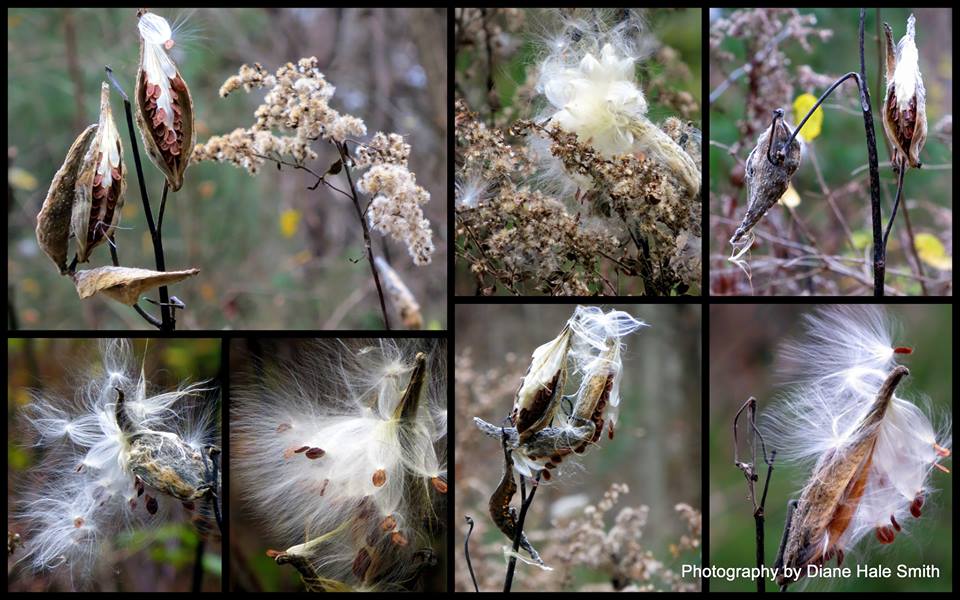Where are they? The monarch butterflies—where have they gone? Those big bright orange rainbows that flutter past every fall. Where did they go this year? They didn’t flutter past my house. I saw not one. Did you? What’s happening?
I can hardly bear to say, it, but the monarchs are dwindling. Monarch populations hit historic–disastrous–lows this year. There are a lot of reasons for this—pesticides, bad weather, habitat loss. But a big reason is loss of milkweed.
Milkweed. It’s the plant that monarchs need. The only plant they lay eggs on, the only plant the caterpillars will feed on. Without milkweed, monarchs are not possible. There are several varieties—common milkweed, swamp milkweed, butterfly weed—all native. But even common milkweed is becoming a rare sight. It’s banished from yards and gardens. Sprayed along highways. Mowed under for cornfields. Overtaken and swamped by invasive non-natives.
So in this season of thankfulness for our bounty, for all the food we have to feast on, let us be thankful for milkweed. For this year’s bountiful crop of seeds. Save a corner of your yard for milkweed next spring. Weed it not from your garden. Let an unmowed strip of milkweed straggle around the edges of the soccer field, the shopping mall, the cemetery. So that next year milkweed will flourish, and we can be thankful for one more year’s hope that monarchs will survive.
Many thanks to Diane Hale Smith for these lovely milkweed photos.





I love milkweed! Especially the seed pods, which look like little hats. I’ve even heard of people who have spun the “fiber”. I feel like I see it all over out here. I did not realize it was disappearing. I will pay attention to opportunities for preservation. As always, an eye a opening article.